RBS 2011 Annual Report Download - page 239
Download and view the complete annual report
Please find page 239 of the 2011 RBS annual report below. You can navigate through the pages in the report by either clicking on the pages listed below, or by using the keyword search tool below to find specific information within the annual report.-
 1
1 -
 2
2 -
 3
3 -
 4
4 -
 5
5 -
 6
6 -
 7
7 -
 8
8 -
 9
9 -
 10
10 -
 11
11 -
 12
12 -
 13
13 -
 14
14 -
 15
15 -
 16
16 -
 17
17 -
 18
18 -
 19
19 -
 20
20 -
 21
21 -
 22
22 -
 23
23 -
 24
24 -
 25
25 -
 26
26 -
 27
27 -
 28
28 -
 29
29 -
 30
30 -
 31
31 -
 32
32 -
 33
33 -
 34
34 -
 35
35 -
 36
36 -
 37
37 -
 38
38 -
 39
39 -
 40
40 -
 41
41 -
 42
42 -
 43
43 -
 44
44 -
 45
45 -
 46
46 -
 47
47 -
 48
48 -
 49
49 -
 50
50 -
 51
51 -
 52
52 -
 53
53 -
 54
54 -
 55
55 -
 56
56 -
 57
57 -
 58
58 -
 59
59 -
 60
60 -
 61
61 -
 62
62 -
 63
63 -
 64
64 -
 65
65 -
 66
66 -
 67
67 -
 68
68 -
 69
69 -
 70
70 -
 71
71 -
 72
72 -
 73
73 -
 74
74 -
 75
75 -
 76
76 -
 77
77 -
 78
78 -
 79
79 -
 80
80 -
 81
81 -
 82
82 -
 83
83 -
 84
84 -
 85
85 -
 86
86 -
 87
87 -
 88
88 -
 89
89 -
 90
90 -
 91
91 -
 92
92 -
 93
93 -
 94
94 -
 95
95 -
 96
96 -
 97
97 -
 98
98 -
 99
99 -
 100
100 -
 101
101 -
 102
102 -
 103
103 -
 104
104 -
 105
105 -
 106
106 -
 107
107 -
 108
108 -
 109
109 -
 110
110 -
 111
111 -
 112
112 -
 113
113 -
 114
114 -
 115
115 -
 116
116 -
 117
117 -
 118
118 -
 119
119 -
 120
120 -
 121
121 -
 122
122 -
 123
123 -
 124
124 -
 125
125 -
 126
126 -
 127
127 -
 128
128 -
 129
129 -
 130
130 -
 131
131 -
 132
132 -
 133
133 -
 134
134 -
 135
135 -
 136
136 -
 137
137 -
 138
138 -
 139
139 -
 140
140 -
 141
141 -
 142
142 -
 143
143 -
 144
144 -
 145
145 -
 146
146 -
 147
147 -
 148
148 -
 149
149 -
 150
150 -
 151
151 -
 152
152 -
 153
153 -
 154
154 -
 155
155 -
 156
156 -
 157
157 -
 158
158 -
 159
159 -
 160
160 -
 161
161 -
 162
162 -
 163
163 -
 164
164 -
 165
165 -
 166
166 -
 167
167 -
 168
168 -
 169
169 -
 170
170 -
 171
171 -
 172
172 -
 173
173 -
 174
174 -
 175
175 -
 176
176 -
 177
177 -
 178
178 -
 179
179 -
 180
180 -
 181
181 -
 182
182 -
 183
183 -
 184
184 -
 185
185 -
 186
186 -
 187
187 -
 188
188 -
 189
189 -
 190
190 -
 191
191 -
 192
192 -
 193
193 -
 194
194 -
 195
195 -
 196
196 -
 197
197 -
 198
198 -
 199
199 -
 200
200 -
 201
201 -
 202
202 -
 203
203 -
 204
204 -
 205
205 -
 206
206 -
 207
207 -
 208
208 -
 209
209 -
 210
210 -
 211
211 -
 212
212 -
 213
213 -
 214
214 -
 215
215 -
 216
216 -
 217
217 -
 218
218 -
 219
219 -
 220
220 -
 221
221 -
 222
222 -
 223
223 -
 224
224 -
 225
225 -
 226
226 -
 227
227 -
 228
228 -
 229
229 -
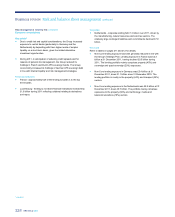 230
230 -
 231
231 -
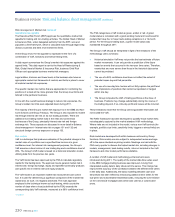 232
232 -
 233
233 -
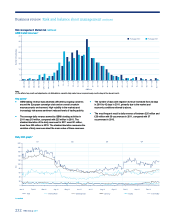 234
234 -
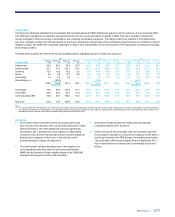 235
235 -
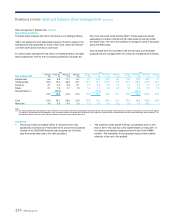 236
236 -
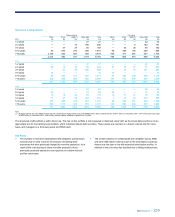 237
237 -
 238
238 -
 239
239 -
 240
240 -
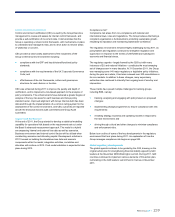 241
241 -
 242
242 -
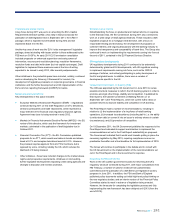 243
243 -
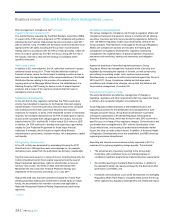 244
244 -
 245
245 -
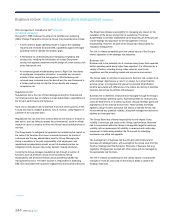 246
246 -
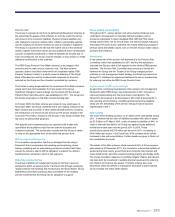 247
247 -
 248
248 -
 249
249 -
 250
250 -
 251
251 -
 252
252 -
 253
253 -
 254
254 -
 255
255 -
 256
256 -
 257
257 -
 258
258 -
 259
259 -
 260
260 -
 261
261 -
 262
262 -
 263
263 -
 264
264 -
 265
265 -
 266
266 -
 267
267 -
 268
268 -
 269
269 -
 270
270 -
 271
271 -
 272
272 -
 273
273 -
 274
274 -
 275
275 -
 276
276 -
 277
277 -
 278
278 -
 279
279 -
 280
280 -
 281
281 -
 282
282 -
 283
283 -
 284
284 -
 285
285 -
 286
286 -
 287
287 -
 288
288 -
 289
289 -
 290
290 -
 291
291 -
 292
292 -
 293
293 -
 294
294 -
 295
295 -
 296
296 -
 297
297 -
 298
298 -
 299
299 -
 300
300 -
 301
301 -
 302
302 -
 303
303 -
 304
304 -
 305
305 -
 306
306 -
 307
307 -
 308
308 -
 309
309 -
 310
310 -
 311
311 -
 312
312 -
 313
313 -
 314
314 -
 315
315 -
 316
316 -
 317
317 -
 318
318 -
 319
319 -
 320
320 -
 321
321 -
 322
322 -
 323
323 -
 324
324 -
 325
325 -
 326
326 -
 327
327 -
 328
328 -
 329
329 -
 330
330 -
 331
331 -
 332
332 -
 333
333 -
 334
334 -
 335
335 -
 336
336 -
 337
337 -
 338
338 -
 339
339 -
 340
340 -
 341
341 -
 342
342 -
 343
343 -
 344
344 -
 345
345 -
 346
346 -
 347
347 -
 348
348 -
 349
349 -
 350
350 -
 351
351 -
 352
352 -
 353
353 -
 354
354 -
 355
355 -
 356
356 -
 357
357 -
 358
358 -
 359
359 -
 360
360 -
 361
361 -
 362
362 -
 363
363 -
 364
364 -
 365
365 -
 366
366 -
 367
367 -
 368
368 -
 369
369 -
 370
370 -
 371
371 -
 372
372 -
 373
373 -
 374
374 -
 375
375 -
 376
376 -
 377
377 -
 378
378 -
 379
379 -
 380
380 -
 381
381 -
 382
382 -
 383
383 -
 384
384 -
 385
385 -
 386
386 -
 387
387 -
 388
388 -
 389
389 -
 390
390 -
 391
391 -
 392
392 -
 393
393 -
 394
394 -
 395
395 -
 396
396 -
 397
397 -
 398
398 -
 399
399 -
 400
400 -
 401
401 -
 402
402 -
 403
403 -
 404
404 -
 405
405 -
 406
406 -
 407
407 -
 408
408 -
 409
409 -
 410
410 -
 411
411 -
 412
412 -
 413
413 -
 414
414 -
 415
415 -
 416
416 -
 417
417 -
 418
418 -
 419
419 -
 420
420 -
 421
421 -
 422
422 -
 423
423 -
 424
424 -
 425
425 -
 426
426 -
 427
427 -
 428
428 -
 429
429 -
 430
430 -
 431
431 -
 432
432 -
 433
433 -
 434
434 -
 435
435 -
 436
436 -
 437
437 -
 438
438 -
 439
439 -
 440
440 -
 441
441 -
 442
442 -
 443
443 -
 444
444 -
 445
445 -
 446
446 -
 447
447 -
 448
448 -
 449
449 -
 450
450 -
 451
451 -
 452
452 -
 453
453 -
 454
454 -
 455
455 -
 456
456 -
 457
457 -
 458
458 -
 459
459 -
 460
460 -
 461
461 -
 462
462 -
 463
463 -
 464
464 -
 465
465 -
 466
466 -
 467
467 -
 468
468 -
 469
469 -
 470
470 -
 471
471 -
 472
472 -
 473
473 -
 474
474 -
 475
475 -
 476
476 -
 477
477 -
 478
478 -
 479
479 -
 480
480 -
 481
481 -
 482
482 -
 483
483 -
 484
484 -
 485
485 -
 486
486 -
 487
487 -
 488
488 -
 489
489 -
 490
490
 |
 |

RBS Group 2011 237
Governance, structure and risk appetite
Governance and structure
Group Operational Risk is an independent function reporting to the
Deputy Group Chief Risk Officer. Group Operational Risk is responsible
for the design and maintenance of the operational risk policy standards
(ORPS).
The ORPS are incorporated in the Group Policy Framework (GPF), they
provide the direction for delivering effective operational risk management
and are designed to allow the consistent identification, assessment,
management, monitoring and reporting of operational risk across the
Group.
The Operational Risk Executive Committee which was formed in January
2011, oversees the operational risk framework and profile of the Group in
line with the agreed risk appetite. It provides guidance, oversight and
advice. It also escalates and reports any issues or areas of concern to
the Board Risk Committee and to other senior committees.
Risk appetite
The Group’s operational risk appetite statement is agreed by the Group
Board. It comprises a number of specific measures of risk, such as:
xthe maximum operational risk losses the Group is prepared to
accept. This is expressed as a percentage of the Group’s estimated
gross income for the year ahead; or
xthe value of a single extreme but plausible operational impact.
These are identified and assessed through the scenario analysis
programme (refer to Scenario analysis below).
To ensure the Group operates within the set risk appetite, the high-level
statements are supplemented by specific tolerances for different types of
operational risk. The GPF sets out how to manage risk within acceptable
limits, which in turn enables the Group to operate within the overall risk
appetite and the specific tolerances. The Group has a zero tolerance for
risks such as breaches of laws and regulations.
Operational risk cycle and key management tools
The operational risk cycle comprises four stages:
xIdentification of risks;
xAssessment or measurement of the scale of risks;
xManagement or control of risks to prevent their recurrence or
minimise the potential impact; and
xMonitoring and reporting of risks.
Although the operational risk tools encompass all stages of the risk cycle,
they can be broadly categorised as follows:
Identification and assessment
Risk and control assessments
Controls that are effective without being excessive ensure the Group
retains its reputation for efficient customer service and security. Risk and
control assessments are used to identify and assess material operational
risks and key controls across all business areas. The process is designed
to ensure that risks are effectively managed in line with stated risk
appetite, prioritised and documented. Controls are tested frequently with
aview to ensuring they remain fit for purpose and operate effectively. The
Group’s risk assessment methodology was enhanced during 2011 to
ensure a more consistent approach to identifying risks and their
associated controls and measuring expected loss. Risk assessments
consider the new firm-wide taxonomy and will soon be captured in the
Group-wide repository for operational risk.
Risk assessments are often conducted in a workshop environment,
bringing together subject matter experts from across the division and key
functions. By sharing expertise, they can identify improvements to risk
identification, measurement and control. Risk governance is reviewed
regularly ensuring that there is clarity and ownership of key risk areas.
Through coming together and sharing knowledge, participants gain a
broader understanding of how their work fits together.
Group new product approval process
The Group’s new product approval process ensures there is a consistent
process to identify, assess and approve the risks associated with new
products.
Following the conclusion of reviews conducted during 2011,
enhancements will be made during 2012 to the product governance
forums, to provide earlier engagement between the business, Group and
divisional risk teams and subject matter experts when assessing whether
the risks associated with new products are in line with appetite. The
forums will be supported by an upgrade to the Group’s key tools used to
manage and report on new product approval.
Scenario analysis
Scenario analysis is used to assess the possible impact of extreme but
plausible operational risk loss events. It provides a forward-looking basis
for managing exposures beyond the Group's risk appetite. The
methodology provides a structured and consistent approach to scenario
scoping and measurement. A significant portfolio of scenarios was
developed in 2011 across divisions, covering material risks to which the
Group is exposed. Group-wide scenarios are centrally scoped and
workshops are facilitated by Group Operational Risk in conjunction with
functions and policy owners, before being assessed by divisions to derive
specific impact estimates. This also allows the Group to review
operational risk impacts as they arise from macroeconomic stresses (e.g.
eurozone distress) in a time-efficient and effective manner.
